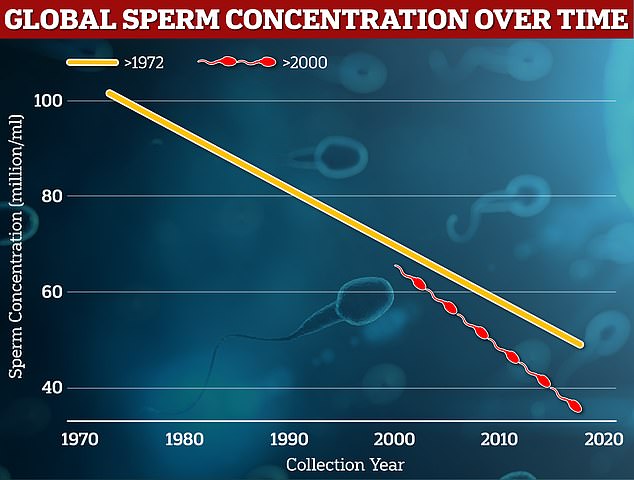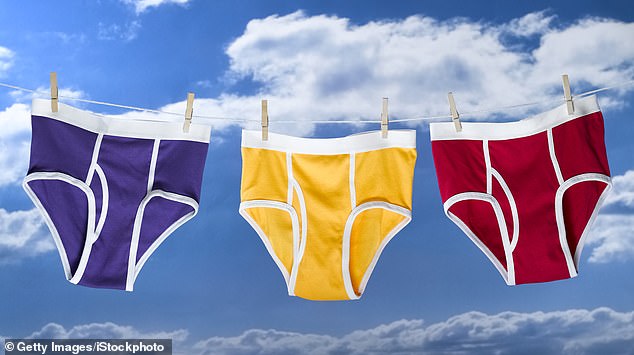When men stayed home during the pandemic, it appears their sperm also became less active.
The researchers came to this finding while investigating the widely held view that sperm counts in men are declining worldwide.
While they didn’t find any decrease in numbers, they did find that sperm collected during lockdown swam much less.
The scientists studied semen from 6,758 men aged 18 to 45 collected by the world’s largest sperm bank, Cryos International in Denmark.
Research published in the journal Human Reproduction found that sperm concentration samples, taken from men who applied to be sperm donors between 2017 and 2022, “did not change significantly over a six-year period.”
The researchers studied semen from 6,758 men aged 18 to 45 collected by the world’s largest sperm bank, Cryos International in Denmark. Research published in the journal Human Reproduction found that samples, taken from men who applied to be sperm donors between 2017 and 2022, found that sperm concentration “did not change significantly over a six-year period.”

Research has previously suggested that sperm count in men is declining. Pictured is a 2022 global study published in the journal Human Reproduction Update. The graph shows: The sperm concentration rate is decreasing globally from samples collected between 1972 and 2000 (orange) and since 2000 (red).
But they did find that there was a big difference in motility: the ability of sperm to swim spontaneously.
Study co-author Professor Allan Pacey from the University of Manchester said: “It is commonly believed that sperm counts in men are declining.”
He said a recent ‘meta-study’ – which compiled data from 44 investigations – by Dr. Hagai Levine of the Hebrew University of Jerusalem found that sperm counts had declined by up to 2.64 percent annually in men across the world. world since 2000.
Professor Pacey, however, said: “We saw no such change and that suggests that in this population of sperm donation seekers, in these four Danish cities, sperm concentrations have not changed between 2017 and 2022.”
But the total number of swimming sperm provided for testing decreased by 16 percent and 22 percent respectively from 2019 to 2022.
Co-author Professor Robert Montgomerie from Queen’s University, Canada, said: “The decline in measures of sperm motility between 2019 and 2022 was an unexpected finding.
‘This decline roughly corresponds to the start of the global Covid pandemic.
“While there is no evidence to suggest that the SARS-CoV-2 virus is directly affecting sperm, we speculate whether widespread lockdowns may have led to changes in work patterns, diet and physical activity levels that we already know can affect sperm motility.’
The study authors were unable to gather information about the health or lifestyles of the men who applied to be sperm donors that could help identify factors that may explain decreased sperm motility.
The current study only analyzed samples collected in 2017, since more precise computational methods were used to count sperm from that date, before this counting was done manually.


